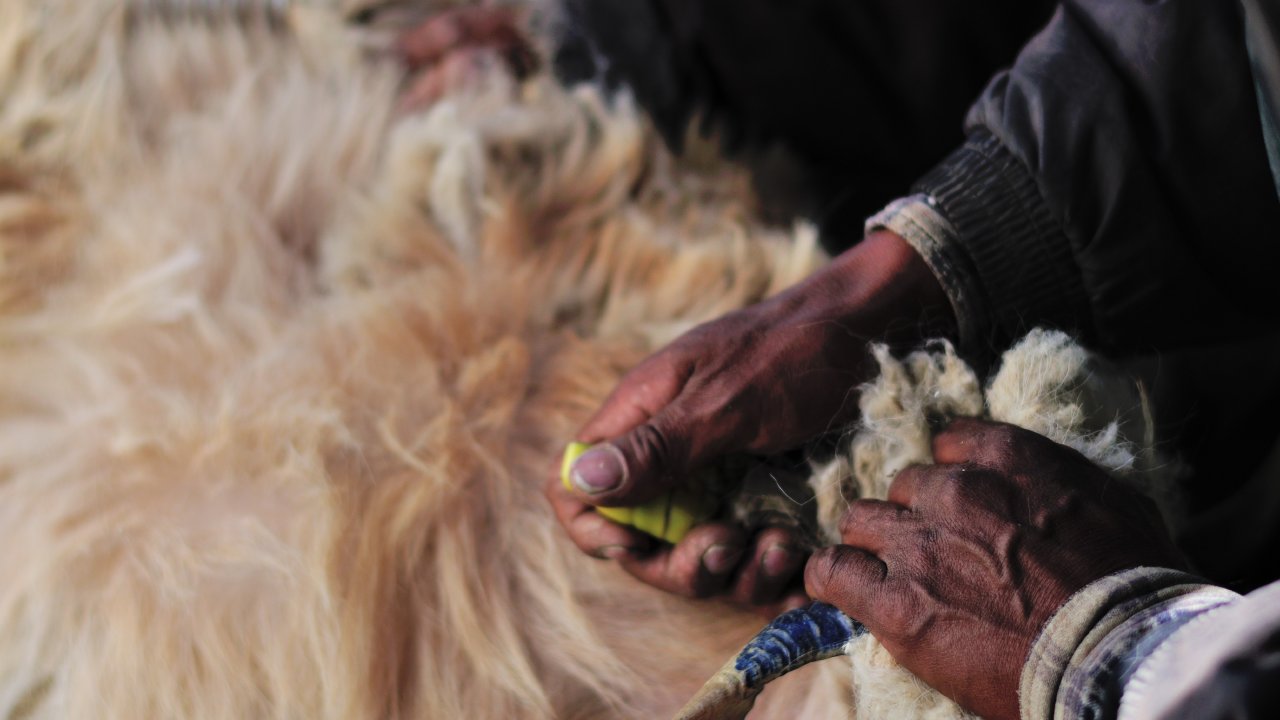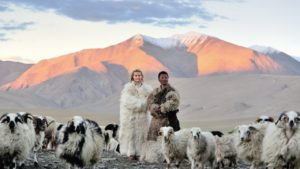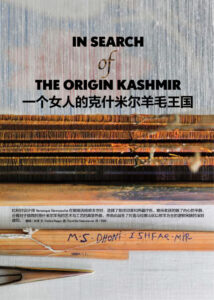A cashmere sweater is the ultimate way to stay warm for lovers of luxury fashion. The fine material feels wonderfully soft but does not come cheap. Why is that?
1) Cashmere shortage
Cashmere isn’t simply ‘harvested’. The wool comes from the ‘Cashmere goat’, named after the Kashmir region in India, Pakistan and China where these animals originally come from.
Although there are enough of these goats in these countries, one goat produces small amounts of wool. That’s because only the undercoat is used for cashmere wool. And this wool can only be collected once a year! Moreover, only the downy hair of the underbelly is used because it is the softest. One goat gives 100 grams of cashmere, of which only about 50 grams remain.
To produce one Tuinch cashmere sweater, you easily need four goats! The high price of cashmere is due to its limited availability and high demand.
2) Cashmere: the diamond of fibres
Worldwide demand for cashmere is increasing every year, and that results in a democratisation of the luxurious fabric. Large chain shops currently offer cashmere sweaters for less than €80. However, the quality is inferior and we won’t even mention the effects on our planet.
You find goats with the longest and highest-quality hair in India, where luxury brands like Tuinch get their supplies. Chain shops are usually less rigorous in their selection and mix short and long hairs or only use very short fibres. They often purchase their supplies in China, which is estimated to have 10 million cashmere goats. Because demand continues to rise, herdsmen continue to add goats to their flocks so they can produce more cashmere. This leads to overgrazing, which results in desertification. And that contributes to global warming. Flocks cannot find enough food and water due to desertification; the goats become undernourished, and the quality of the cashmere fibres decreases. This results in a vicious circle in which even more goats are needed.
The Himalaya region in India, where Tuinch’s cashmere comes from, is inhabited by nomads who don’t maximise cashmere production. Human beings, the planet and the ecosystem are respected here. An artificial ecosystem lowers costs but adversely affects the quality. In Tso Moriri goats live in the wild and can live their lives naturally. As a result, Tuinch offers you the highest quality cashmere wool within an ethical and environmentally sound narrative. Sustainable, high-end fashion does not come cheap but true luxury lovers view cashmere as an investment rather than a fad.
3) Cashmere know-how & intensive craftsmanship
ollecting and spinning cashmere is a very time-consuming craft that requires specialised knowledge. Which fibres of the undercoat are suitable for producing the material? What must you keep in mind if you want to produce high-quality cashmere?
The wool collected from cashmere goats is much finer than sheep’s wool. As a consequence, it takes many more man-hours and more effort to produce cashmere wool. The undercoat of these goats is wonderfully ‘woolly’, soft and completely clean. ‘Perfect’ cashmere mainly consists of the softest hairs of the winter undercoat and only a small portion of coarser hair. Thin and fine cashmere thread is spun from this soft cashmere down. Cashmere thread is incredible fine because an average hair has a diameter of less than 12 to 19 micrometres. The diameter of normal sheep’s wool is twice as thick and human hair has an average diameter of more than 30 micrometres. The undercoat used to be combed and picked by hand. These days the fleece is usually clipped and shorn. The valuable fibres are mechanically separated from the guard hair and from dirt and other imperfections. Then the wool is washed and spun. At this point, the magnificent material is ready to be processed.
The impressive quality of this coveted but scarce material and the intensive labour process explain why cashmere belongs in a higher price category. A high-quality article of clothing made from 100% cashmere should be viewed as an ‘investment’. There is no other natural material with such impressive insulating properties, such a pleasant effect on the skin and, most importantly, no other type of wool that lasts as long as cashmere.
Do you want to witness the unique feeling of top notch cashmere on your skin?
Explore our webshop and find out how Tuinch transforms this diamond of fibres into high-end fashion must-haves.







